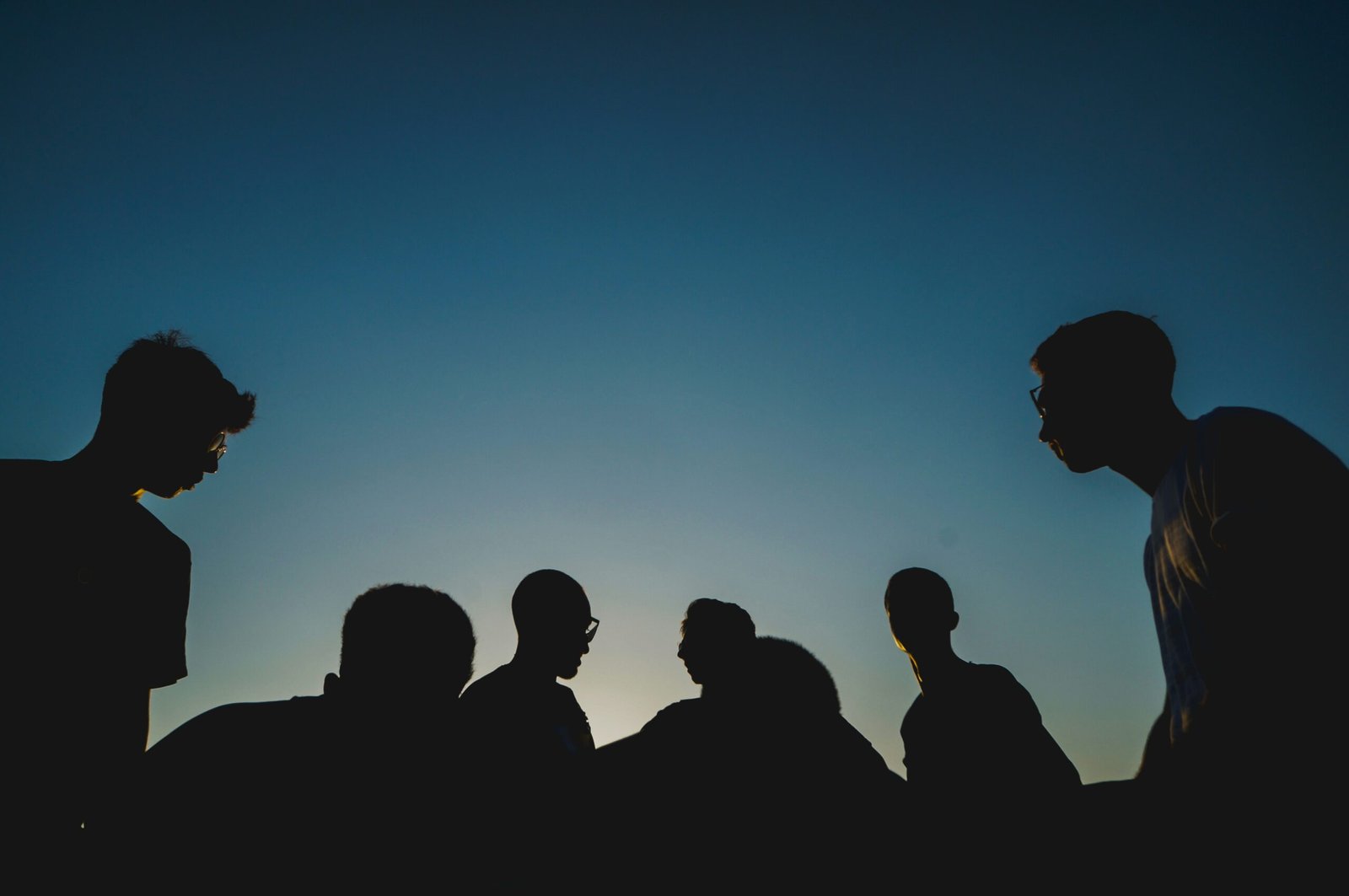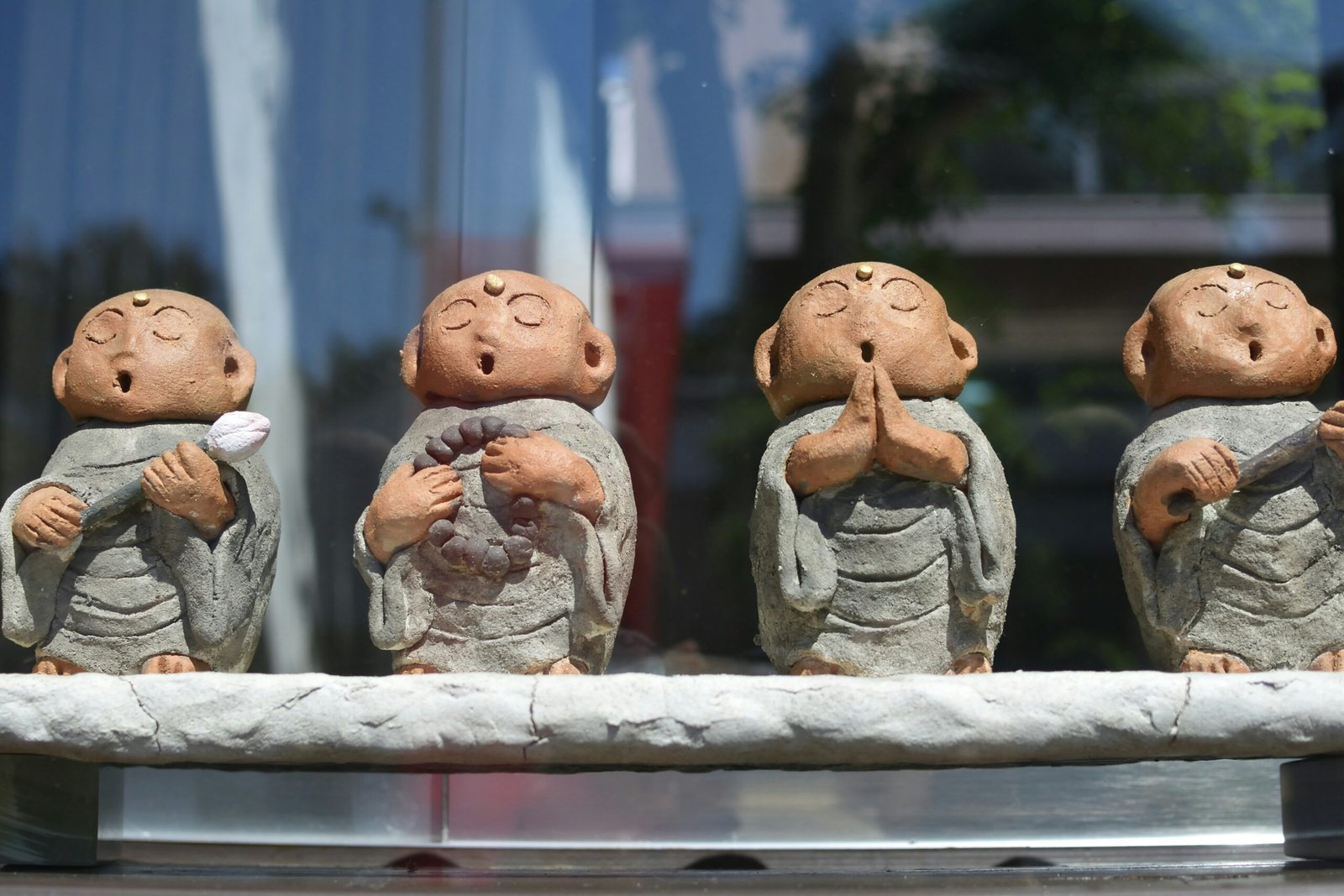Introduction to Group Spellcasting
Group spellcasting, often conducted within the framework of a coven, is an ancient practice that has been known to amplify the power and effectiveness of magical workings. A coven, traditionally composed of a close-knit group of practitioners, collaborates on spellcasting, rituals, and other spiritual endeavors. The origins of this practice can be traced back to various ancient cultures where community and collective action were integral to spiritual life.
In group spellcasting, the synergy created by multiple individuals focusing their energy and intent on a common goal can result in more potent and successful outcomes. This amplification occurs because each member of the coven contributes their unique energy, knowledge, and skills, which, when combined, form a powerful collective force. The unity and shared intent among the members are crucial elements, as they ensure that the energy directed towards the spell is cohesive and harmonious.
Historically, covens have been seen as sacred circles where mutual support and trust are paramount. The collaborative nature of coven work fosters a sense of community and interconnectedness, which can be particularly empowering for individuals. This communal aspect not only enhances the effectiveness of spellcasting but also provides emotional and spiritual support, making the practice deeply fulfilling.
Moreover, the structure and rituals of coven work often involve carefully planned ceremonies that honor various deities, natural elements, and cycles of nature. These rituals are infused with symbolism and tradition, which further enriches the group’s spellcasting activities. By drawing upon these rich traditions, coven members can tap into a wellspring of ancient wisdom, thereby enhancing their magical practices.
In essence, group spellcasting within a coven is a testament to the power of collective effort and shared purpose. It underscores the importance of unity, trust, and mutual respect among practitioners, highlighting how these elements can magnify the efficacy of magical endeavors. As we delve deeper into the dynamics of coven work, it becomes evident that the strength of a coven lies not only in its magical prowess but also in the bonds that unite its members.
The Significance of Coven Structure
A coven’s structure is fundamental to its functionality and effectiveness. Traditionally, a coven is led by a High Priestess and a High Priest, who act as spiritual leaders and guides. The High Priestess often holds the highest authority, embodying the feminine divine and overseeing rituals and ceremonies. The High Priest complements her, representing the masculine divine and supporting the coven’s spiritual and operational needs.
Beyond these central figures, other members play crucial roles within the coven. Each member may have specific responsibilities, such as the Maiden, who assists the High Priestess, or the Summoner, who acts as a liaison between the coven and the outside world. These roles are not merely ceremonial; they ensure that tasks are distributed efficiently and that each member contributes to the coven’s collective goals.
The importance of hierarchy within a coven cannot be overstated. A well-defined hierarchical structure ensures that decisions are made efficiently and that rituals are conducted smoothly. It fosters a sense of order and discipline, which is essential during spellcasting and other magical workings. Moreover, this structure helps maintain harmony within the group, as each member understands their role and responsibilities.
The distribution of tasks within a coven also plays a significant role in its success. By dividing responsibilities, the coven can operate more effectively, with each member focusing on their area of expertise. This collaborative approach not only enhances the group’s magical potency but also strengthens the bonds between members. When each person feels valued and understood, the coven operates as a cohesive and harmonious unit.
Ultimately, the structure of a coven is integral to its overall effectiveness. By establishing clear roles, responsibilities, and a strong hierarchical foundation, a coven can function smoothly and achieve its spiritual and magical objectives. The synergy created by this structure contributes to the coven’s power, making group spellcasting a profoundly impactful experience.
In the realm of coven work, the dynamics of energy play a crucial role in the efficacy and potency of group spellcasting. The concept of collective energy, often referred to as group energy or communal energy, is fundamentally different from individual energy work. Whereas individual energy is generated and directed by a single practitioner, collective energy is the synergistic power that arises from the unified efforts of multiple practitioners within a coven.
Raising energy within a coven involves a variety of techniques, each designed to harmonize the contributions of all members. Chanting, drumming, dancing, and synchronized breathing are common practices that facilitate the alignment of individual energies into a cohesive force. These methods not only elevate the energy levels but also foster a sense of unity and shared purpose among the participants. The resonance created by these activities amplifies the energy, making it more potent than the sum of its parts.
Directing the raised energy towards a specific goal is another vital aspect of coven work. This is typically achieved through focused intention and visualization. Members of the coven must maintain a clear and unified vision of the desired outcome, channeling the collective energy towards that objective. The presence of a skilled leader or high priestess can be instrumental in guiding this process, ensuring that the energy remains directed and concentrated.
The benefits of a harmonious energy flow within a coven are manifold. Firstly, it enhances the effectiveness of the spellcasting, as a well-synchronized group can generate a more powerful and stable energy current. Secondly, it strengthens the bonds between coven members, fostering trust and mutual support. Lastly, it provides a sense of spiritual fulfillment, as participants experience the profound connection that comes from working together towards a common goal.
In essence, the energy dynamics in coven work underscore the transformative power of collective effort. By synchronizing their energies, coven members can achieve remarkable results that transcend the capabilities of solitary practitioners. The intricate interplay of individual contributions and shared intent creates a powerful force that is central to the practice of group spellcasting.
Rituals and Ceremonies in Coven Practice
Coven practices are deeply rooted in a variety of rituals and ceremonies that serve to unite members and align their energies with the natural and spiritual world. Among the most significant of these are Sabbats, Esbats, and initiation rites, each with distinct purposes and components.
Sabbats are the seasonal festivals celebrated by covens, marking the cycles of the year. These eight festivals, including Samhain, Yule, Imbolc, and Beltane, correspond to significant points in the agricultural and solar year. Their purpose is to honor the changing seasons, celebrate the harvests, and connect with the deities and spirits associated with these times. Typically, Sabbat rituals involve communal feasting, dancing, and the performance of symbolic acts such as lighting candles or fires to represent the sun’s power.
Esbats, on the other hand, are moon-focused ceremonies occurring monthly during the full moon. The purpose of Esbats is to harness the moon’s energy for magical workings, divination, and personal spiritual growth. In a group setting, these ceremonies often include chanting, meditation, and the casting of a circle to create a sacred space for the ritual. Members may engage in spellcasting, share insights, and offer support for each other’s magical endeavors.
Initiation rites are another crucial aspect of coven practice, marking the formal entry of a new member into the group. These rites serve to bond the initiate to the coven, symbolically representing their rebirth into a new spiritual path. The ritual typically involves a series of symbolic actions such as anointing, oath-taking, and the presentation of ritual tools like the athame (a ceremonial knife) or the chalice. The initiate may also undergo a period of training or probation before fully integrating into the coven.
Symbolism and ritual tools play a vital role in these ceremonies, providing tangible representations of the spiritual and magical principles at work. Items such as wands, pentacles, and cauldrons are not mere props but are imbued with meaning and used to focus energy and intent. By incorporating these elements, covens create a rich, immersive ritual experience that fosters a deep sense of connection and purpose among its members.
Group spellcasting has long been revered for its enhanced potency and success rate, owing to the collective energy and shared intention that multiple practitioners bring to the ritual. One of the primary benefits of group spellcasting is the amplification of energy. When several individuals align their focus and intention towards a common goal, the cumulative energy is significantly stronger than that of a solitary practitioner. This heightened energy can make a substantial difference, particularly in spells that require a considerable amount of power, such as protection, healing, and manifestation spells.
Protection spells, for instance, benefit immensely from group work. The combined energies of multiple practitioners create a formidable barrier against negative influences, making the protection more robust and enduring. Similarly, healing spells performed in a group can result in a more profound and swift recovery. The collective intention of the group can channel a potent healing force that addresses both physical and emotional ailments, providing comprehensive and accelerated relief.
Manifestation spells, which aim to bring about desired outcomes or attract certain energies, also thrive in a group setting. The shared focus of the group magnifies the intention, making the manifestation process more effective. Whether the goal is to attract prosperity, love, or personal growth, the unified efforts of a group can significantly increase the likelihood of success. The synergy created by group spellcasting ensures that the desired outcome is not only achieved but also sustained over time.
The importance of shared intention and focus in group spellcasting cannot be overstated. Each member of the group must be aligned with the same goal and maintain a clear, unwavering focus throughout the ritual. This unity of purpose is what drives the enhanced effectiveness of group spells. By working together, practitioners can harness a powerful collective energy that transcends individual capabilities, making group spellcasting a profoundly potent practice.
Challenges and Solutions in Coven Spellcasting
Group spellcasting, while powerful, is not without its challenges. A common issue is the varying energy levels among coven members. Some practitioners may possess higher energy levels, while others might be less experienced or temporarily drained. This disparity can affect the overall effectiveness of the spell. To address this, covens can implement energy-balancing practices, such as collective meditation before spellcasting sessions. This helps to harmonize the group’s energy, ensuring that each member contributes equally to the ritual.
Conflicts among members are another significant challenge in coven work. Disagreements can arise from differences in personal beliefs, spellcasting techniques, or interpersonal issues. Effective conflict resolution techniques are essential to maintaining a cohesive group dynamic. Open communication should be encouraged, allowing members to express their concerns and resolve issues amicably. Regular check-ins and group discussions can also help in identifying and addressing potential conflicts early on.
Coordination issues can hamper the efficiency of group spellcasting. Ensuring that all members are synchronized in their actions and intentions is crucial for the success of any spell. Detailed planning and clear role assignments can mitigate coordination problems. Coven leaders can facilitate this by organizing pre-spell meetings where tasks are delegated, and the spell’s objectives are clearly outlined. Utilizing tools such as shared calendars and reminders can also help in keeping everyone on the same page.
Maintaining a cohesive group dynamic is vital for the long-term success of a coven. Regular social interactions outside of spellcasting sessions can strengthen bonds among members. Activities like group outings, shared meals, or even informal gatherings can enhance trust and camaraderie. Additionally, establishing a set of shared values and goals can provide a strong foundation, ensuring that all members are aligned in their purpose and commitment to the group.
The Ethical Considerations of Coven Work
In the realm of group spellcasting, ethical considerations are paramount to ensure the responsible and respectful practice of magic within a coven. One of the foundational principles is the importance of consent. Each member must willingly participate and provide explicit consent for any spellcasting activities. This not only fosters trust within the group but also upholds the integrity of the magical work being performed.
Respect for individual boundaries is another crucial aspect. Coven members must be mindful of each other’s personal limits and comfort levels. This includes understanding and respecting any physical, emotional, or spiritual boundaries that individuals may have. By honoring these boundaries, the coven can create a safe and supportive environment for all members.
The responsible use of collective power is a core ethical consideration in coven work. When casting spells as a group, the amplified energy can have significant impacts. Therefore, it is essential to use this power judiciously and with a clear, positive intent. Coven members must be vigilant to avoid any misuse of power that could lead to harm or unintended consequences.
Furthermore, the ethical implications of casting spells that affect others cannot be overlooked. It is imperative to consider the potential impacts on those outside the coven. Casting spells that influence others without their consent can lead to ethical dilemmas and negative repercussions. Thus, coven members should adhere to the principle of “harm none,” ensuring their magical practices do not infringe on the free will or well-being of others.
Adhering to a code of ethics within the coven is vital for maintaining integrity and accountability. Establishing a set of ethical guidelines helps to navigate the complexities of group spellcasting and ensures that all members are aligned in their practices. This code can include principles such as honesty, transparency, and mutual respect, providing a framework for ethical decision-making and fostering a cohesive, harmonious coven.
Building and Sustaining a Successful Coven
Creating and maintaining a successful coven requires careful planning and dedication. The first step is to find like-minded individuals who share a common interest in group spellcasting and coven work. This can be achieved through local community events, online forums, or spiritual gatherings. It is crucial to ensure that all prospective members share similar values and goals to foster a cohesive and harmonious group dynamic.
Once the initial group is formed, it is important to establish clear and achievable goals. These goals should reflect the shared vision of the coven, such as enhancing spiritual growth, performing group spells, or contributing to community welfare. Alongside these goals, defining a set of core values will guide the coven’s practices and interactions. These values may include trust, honesty, respect, and mutual support.
Creating a supportive and nurturing environment is vital for the coven’s longevity and success. Regular meetings are essential to maintain strong connections among members and to facilitate continuous learning. These gatherings can be used for planning rituals, discussing experiences, and sharing knowledge. It is also important to encourage open communication and active participation from all members, ensuring everyone feels valued and heard.
Mutual respect is the foundation of a thriving coven. Each member brings unique skills and perspectives to the group, and recognizing this diversity strengthens the collective power of the coven. Establishing clear guidelines and boundaries will help prevent conflicts and misunderstandings, while fostering a culture of respect and inclusivity.
Dealing with changes in membership can be challenging, but it is a natural part of a coven’s evolution. When a member decides to leave, it is important to handle the departure with grace and understanding. Likewise, welcoming new members should be done thoughtfully, ensuring they align with the coven’s values and goals. A well-structured initiation process can help new members integrate smoothly into the group.
In conclusion, building and sustaining a successful coven requires effort and commitment from all members. By focusing on shared goals, nurturing a supportive environment, and fostering mutual respect, a coven can become a powerful and enriching force in the lives of its members.



